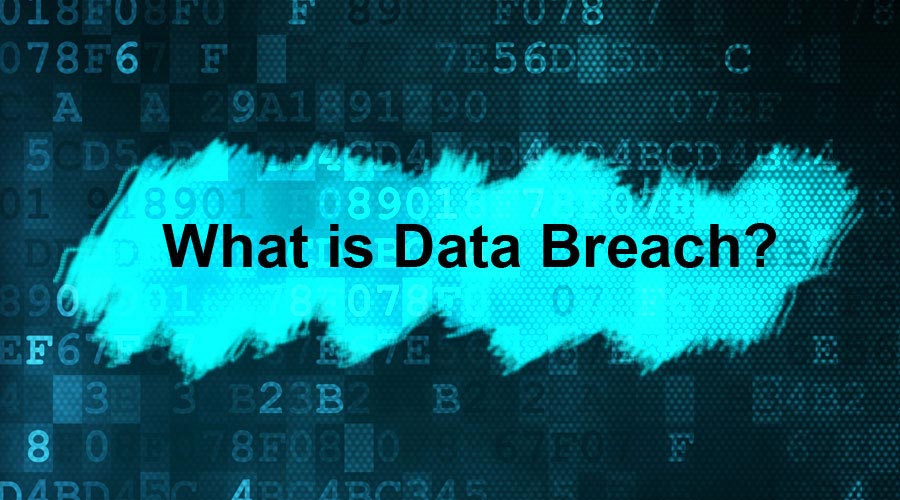
Introduction to Data Breach
A data breach is an event in which leakage of protected data from a secured area into a non-secure location is detected. This occurs due to the weaker security design of the database or application, intentional hacking into the database, failure to integrate a secured application with unsecured modules, etc. The other names for Data Breach are ‘Data spill,’ ‘Data Leakage,’ and ‘Information Leakage.’ On the occasion of a Data Breach, it is identified as an emergency security incident, and it is crucial to find a solution to fix the breach as early as possible.
What is Data Breach?
It is an act or process in which some unauthorized person or resource tries to access someone’s else data without concern for the latter. It is simply a security incident in which data is accessed using unauthorized means. There may be different intuitions for accessing such data without authorization.
According to Wikipedia, It is defined as “A data breach is a security incident in which sensitive, protected or confidential data is copied, transmitted, viewed, stolen or used by an individual unauthorized to do so.” It may involve financial information such as credit card or bank details or maybe other forms of sensitive data. To summarize the definition, individuals access unauthorized data without concern for the data owner or to whom it originally belongs, directly or indirectly.
Understanding Data Breach
Its basic intention is to get through applied securities and access an organization’s intellectual, private data or a group of people. The intention may vary differently, for research purposes, fraud, or others.
Now, It is not a simple concept. It is a complex process that involves lots of phases. These phases may be divided into sections per the attack carried out under each phase. These phases may include the research part, analysis part, attacking part, misuse of data, and others.
1. Phases
Well, to be broadly classified, there can be four different phases of a data breach which are:
a. Research: This is finding the loophole in the system. The intruder tries to find any loophole or weakness in the system using which it can attack a particular data set.
b. Attack: In this phase, the intruder or cyber attacker tries to make initial contact through a network or a social attack. This is one of the most important phases as the intruder sometimes also tries to make friendly contact so that the victim does not get any doubt about the possibility of a data breach.
c. Network/Social Attack: This could be further divided into two attacks: a Network attack and a Social attack.
Let’s see each of them one by one:
- Network Attack: A network attack occurs when an intruder tries to enter an institution, network, system, or organization using some organizational weaknesses. The intruder tries to infiltrate an organization’s network.
- Social Attack: Social attack includes tricking people by getting their trust directly or indirectly by giving access to the organization’s network. An attacker can dupe a victim into passing on sensitive information like credentials or other important data.
d. Ex-Filtration: Once the intruder accesses the organization’s network, the intruder easily reaches sensitive, highly confidential data to misuse. The intruder can use this sensitive data in any way it wants to access it.
2. Why does it Occur?
Well, I think it’s self-explanatory, and there are many reasons to discuss why data breaches happen. Well, there could be not one but many reasons why this data breach happens. It could be for research purposes, data misuse, online fraud, or maybe many reasons.
3. What happens in a Data Breach?
A data breach generally follows one common process: an intruder examines the network, finds the loophole in the system, and finally exploits it with either a network or social attack. Once an intruder is inside the organization, he can access sensitive data without supervision.
4. How to Prevent a Data Breach?
A few of the common ways to prevent it are as follows:
- Keeping only relevant data on the network.
- Safeguarding data.
- Dispose of unused data.
- Review and update the process regularly.
- Educate users.
- Keep the password protected.
- Use licensed software.
- Use updated software.
- Avoid using the public network.
5. What to do after a Data Breach?
Once it has happened, we must go through the following steps to minimize the effect.
First, one should do the following things:
- Evaluate which data is stolen.
- Update all passwords with more secure passwords.
- Inform relevant institutions.
- Update software with the latest updates.
Example:
A common example that most people have come across is that an intruder calls a random person and represents himself as a bank employee. The intruder tries to win the victim’s trust and then asks for sensitive information like credit card numbers, CVV numbers, etc.
Conclusion
With the increasing necessity of the internet, data sharing is a vulnerability to data breaches. An intruder tries to exploit loopholes in the system to misuse the data. There could be a different mechanism that could be followed to minimize the chances of a data breach. We can deploy best practices to minimize data breaches and loss of data.
Recommended Articles
This has been a guide to What is Data Breach? Here we discussed the basic concept and different phases of a Data Breach. You can also go through our other suggested articles to learn more –

